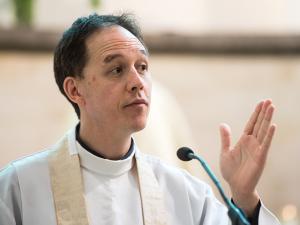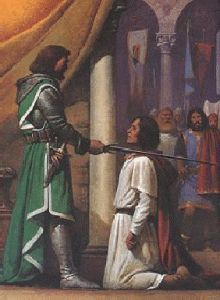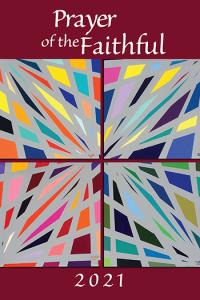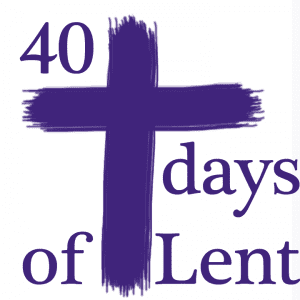
It was 1980 or a year or two later, and I was making a decision that caused me some pain. I was teaching in a Catholic elementary school. My children went to Catholic elementary school. We were strong Catholics. And I was deciding not to encourage my son to become an altar server. With a new name, acolyte, that and lector were two roles that the Second Vatican Council a decade and a half earlier decided were lay ministries. It was a step in raising the status of the laity in the Church.
I became a lector and hoped to see my son also taking his rightful place as a lay person in the Church. It was time for him to be an acolyte if he wanted to. But something stood in the way in my view. It was now a lay ministry, and men and women are equally lay. Vatican II made no distinction in that regard, but somebody in Rome decided to keep women from this lay ministry. I decided that if Dominic’s older sister couldn’t be an acolyte, then I wouldn’t even mention it to my son. Years later, when he was already in high school with other things on his mind than serving at Mass, women and girls were finally able to take their rightful place at the altar.
Last year’s action on ministries in the Church
What brings these memories to mind is a Commonweal article by Rita Ferrone article, “Where the Action Is.” Here she writes about changing Church ministries. Change in the Church is agonizingly slow, and not always for good reasons, but it did happen. Last year, 2021, saw another couple incremental changes, moving lay participation in the Church forward a little bit. The Church honors that participation a little more. 2022 will see further discussion and, perhaps, movement on lay ministries.
Last January Pope Francis, in Ferrone’s words, “opened the instituted ministries of lector and acolyte to women.” With decades of girls and women already performing both these services in most U.S. parishes, that would be the very acme of incremental. Still it’s not meaningless. Key is the word “instituted.” Until Francis acted, Canon Law specified that lay men could perform the ministries of lector and acolyte “on a stable basis.” Women were allowed “by temporary designation.” If I pass over so briefly an obvious (and, frankly, stupid) injustice here, that doesn’t mean I don’t feel any outrage.
In May Francis acted again, “instituting” the ministry of catechist for men and women. In my corner of the world, it’s little more than honoring what lay men and, even more, women have been doing since about forever. For a while now, but not as long as forever, some lay men and women have undertaken catechetical ministry as a career. Dare we hope that official recognition of their life’s work as ministry “on a stable basis” may result in some practical benefits for them?
A small change in the ministry of priesthood
Before the Second Vatican Council what appears now as a strange practice, if not an abuse, was common among priests. At a large priestly gathering, say in St. Peter’s Basilica, rather than celebrating Eucharist together in one joyful community, each priest would say his own private Mass. Well, not totally private. That was against Canon Law. A priest once told me that in that situation he would ask another priest to be his “congregation.” Then the two priests would change places, and he would be the “congregation” for the other priest. Meanwhile, dozens or hundreds of other priests and bishops were doing the same thing in their separate nooks on their separate side altars. I’m pretty sure the Liturgy of the Word, if you could call it that, didn’t include a homily. Only the priest “saying” the Mass took Communion—pretty much the opposite of what Communion means. It was all just about the opposite of a celebration of liturgy, the work of God’s people.
I write as if this were the past and done with, but apparently not so. Ferone writes,
In March, there was a crackdown at St. Peter’s Basilica that eliminated private Masses in favor of concelebration.
The Second Vatican Council introduced concelebration precisely because, in Ferone’s words, “The norm of the liturgy is that it is a communal exercise, not a solo performance.” And concelebration, where more than one priest leads a Mass, “underscores the unity of the priesthood.”
Lay people invited into priestly work
Before the Second Vatican Council priesthood was the end of a process of seven steps called orders. There were five minor orders—doorkeeper, lector, exorcist, acolyte, and sub-deacon. Major orders of deacon and priest followed. Pope Paul VI eliminated doorkeeper, exorcist, and sub-deacon. Doorkeeper maybe translates to usher today, and exorcist is a specialty that only some brave priests undertake. I don’t know what sub-deacon was ever about. The main thing Paul VI did, however, is officially transfer the orders, now renamed ministries, of lector and acolyte to lay people.
There was what Ferone calls a “catch.” These are lay ministries and important enough, for Paul, that ministers should be formally instituted. But “Paul reserved the instituted ministries to males. It’s not clear why.” Whatever the reason then, it’s now clear that women are officially welcom in the sanctuary. (An aside: Why not let the movement go in the other direction? Instead of inviting a few more people into the sanctuary, just expand the meaning of sanctuary to include the whole assembly. I suggested adopting that Protestant terminology in this post.)
New in 2022?
Cardinal Marc Ouellet is prefect of the Congregation for Bishops. He is planning a major conference on priesthood at the Vatican in the coming year. Among other things it will focus on the relationship between the priesthood of the faithful and the ordained priesthood. Ferone says it will be “’constructive theology,’ which means asking new questions.”
One somewhat new question concerns whether the Church should ordain women as deacons. Pope Francis has formed a second Vatican committee to study this question. The first such committee came at the request of a worldwide organization of Catholic sisters and nuns. It could not agree on the role of women deacons in the early Church and made no recommendation. My take: If the early Church had women deacons ministering like men deacons, that would decide the issue. If not, I don’t see why that would limit what the Church does today.
The October 2019 Synod of Amazon bishops brought up the issue again in relation to the needs of that far-flung region. The new commission, with entirely different membership, was the pope’s response. The commission seems to split evenly between those for and those against women deacons. (“Women deacons’ commission to hold first meeting,” in The Tablet, August 23, 2021)
You can guess that women’s participation in the life of the Church is important to me. Women have always been important to the Church, but not in a decision-making capacity. That needs to and can change. I don’t know why the College of Cardinals couldn’t include lay persons, both women and men. On the question of ordaining women deacons, my view is simple: I would love to hear women homilists at Sunday liturgy and see less male dominance around the altar.
The role of the deacon
The Diocese of Los Angeles has posted on the internet a description of the role of the deacon. I’ll give that document the last word, except that I substituted plurals for all the masculine singulars. Nothing there is any less appropriate for women than for men.
Deacons are members of the clergy along with priests and bishops. The deacons’ ministry has three dimensions: liturgy, word and service. At the liturgy, they assist the bishop and priests. At the Mass, deacons proclaim the Gospel, may be invited to preach the homily, and assist at the altar. Deacons may also baptize, witness and bless marriages, preside at the Liturgy of the Hours, and preside at funeral liturgies among many other duties.
Living in the world, deacons have a particular sensitivity to the needs of real families – including single parents, students, older people, those with disabilities, the incarcerated and those who suffer from poverty or addictions of many kinds.
All Christians are called, but deacons serve with a special grace – a unique authority and humble power. They are responding to the prompting of the Holy Spirit. They are sent by the Church to be the presence of Christ to those in need.
Image credit: Catholic Bishops’ Conference of England and Wales












